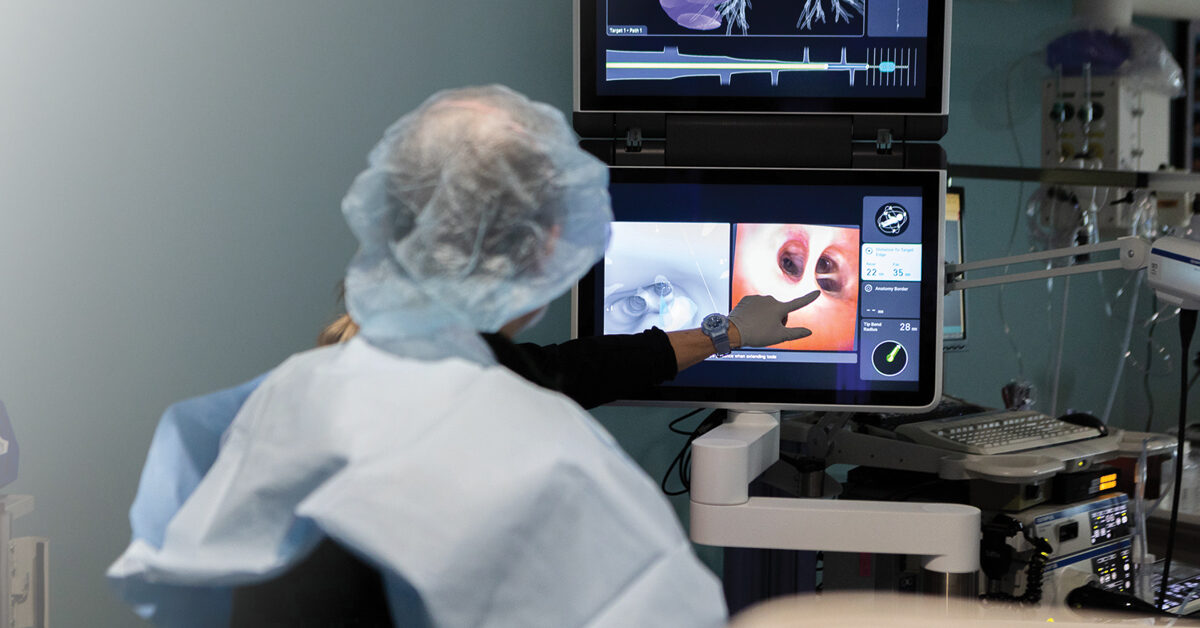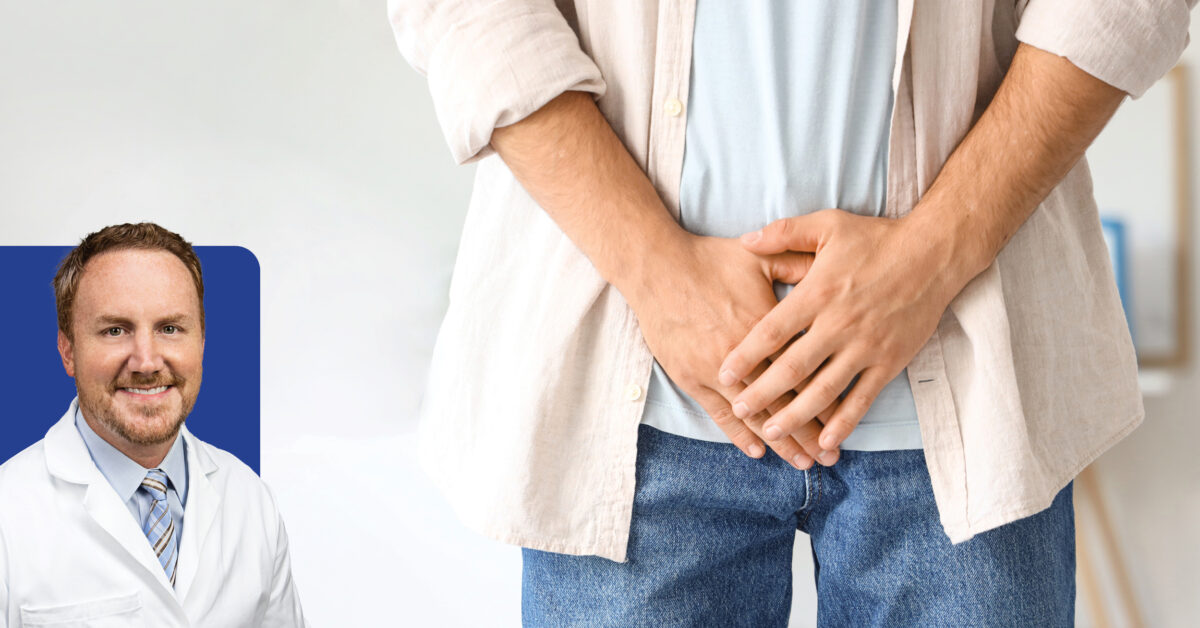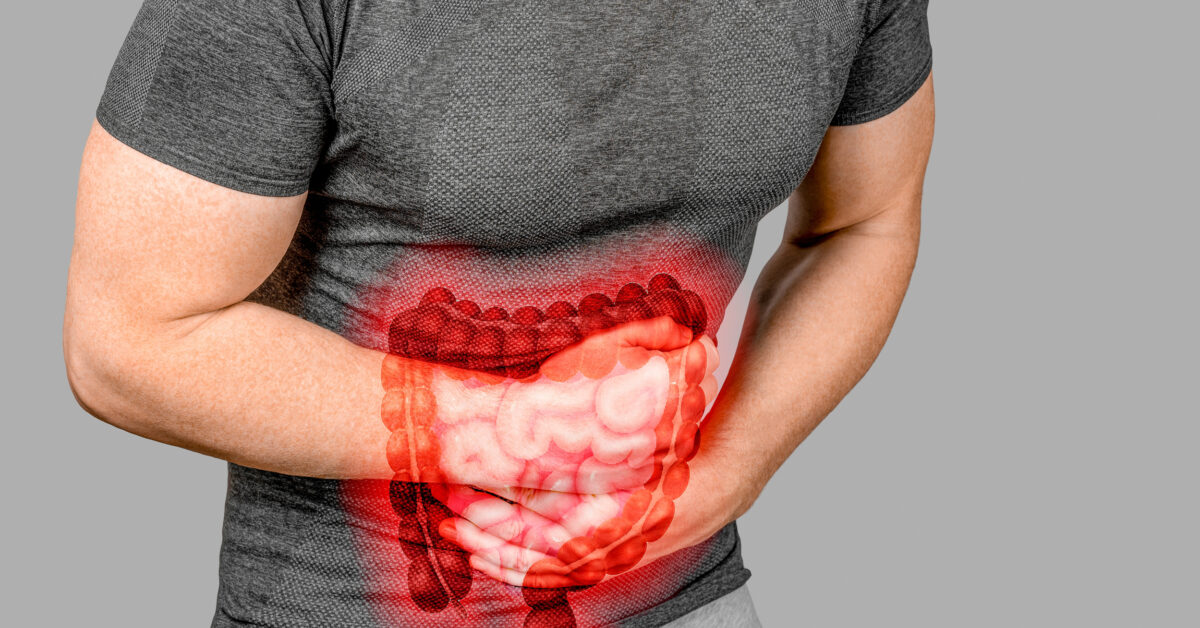
Resolutions to Make 2023 Your Best Year Ever!
January 2023
Financial Planning
January 2023State of the art technology, pharmacological advancements, and on-going research keep healthcare organizations ever evolving and striving to provide communities with the best possible care. This special section spotlights some of the important contributions made by local healthcare providers, including technologies, therapies, treatments, and programs to improve the health and well-being of the citizens of Southwest Louisiana.
Ion Robot: the New Age of Lung Cancer Diagnostics
The newest member to join the family of robotic-assisted technology at Lake Charles Memorial Health System is the Intuitive Ion endoluminal system. Peripheral lung biopsy can now be performed using this innovative, state-of-the-art robotic-assisted technology. This major medical advancement offers doctors unprecedented stability and precision, addressing a challenging aspect of lung biopsy by enabling physicians to obtain tissue samples from deep within the lung, thus detecting earlier stages of lung cancer.
Pulmonologist Clifford Courville, MD, with Memorial Medical Group and a member of the medical staff at Lake Charles Memorial Health System, performed the first minimally invasive procedure in Southwest Louisiana using the Ion last November. He looks forward to this technology ushering in a new era of early-stage lung cancer diagnostics and the ability to treat local lung cancer patients sooner than ever before.
Approximately 75% of lung cancers are diagnosed in an advanced stage. 70% of cancerous lung nodules are found in the outer third of the lung, which are challenging to reach and diagnose. Typically, if a physician finds a suspicious spot on the lung, commonly called a small mass or nodule, he or she may recommend that it be checked out further. This test is called a lung biopsy. Biopsy involves obtaining a tissue sample from the suspicious area and examining the cells under a microscope to determine if cancer or another disease is present. There are several ways to obtain tissue for biopsy. One way lung biopsies are obtained is through a procedure called bronchoscopy. During bronchoscopy with the Ion, the ultra-thin, easily maneuverable catheter can move 180 degrees in all directions, making a biopsy of a mass easier. The equipment allows doctors to navigate along a planned path through small and tortuous airways to reach nodules in any airway segment within the lung.
The robot’s flexible biopsy needle can also pass through very tight bends via the catheter to collect tissue, enabling a more precise biopsy and easier experience for patients. “The Ion gives me the ability to navigate the natural airways of the lung, with a lower risk of puncturing the lung tissue,” said Dr. Courville. “It’s a safer way to approach the lesions that are in the periphery of the lung for patients who have fairly advanced underlying lung disease.”
The biopsy approach a doctor recommends depends on the size of the nodule, the location within the lung, and a patient’s overall health. Fewer than 5% of nodules are actually cancer, but a pulmonologist may recommend this test to verify a diagnosis.
Prior to the Ion robotic-assisted technology, the preferred method to reach an abnormal spot in the lung was to use a live CT scan image and a needle, entering the chest wall and lung from outside the body; this presented a relatively high risk of injuring the lung tissue and potentially causing the lung to collapse for some patients who had advanced lung disease.
Currently LCMHS is the fifth site in the state and the only hospital in Southwest Louisiana that offers this advanced technology. Ion is built on more than two decades of leadership in robotic-assisted technology by Intuitive, the maker of the da Vinci surgical system. The Ion endoluminal system allows for more precision, more reach, more stability—and more answers.
To learn more or to make an appointment with Dr. Courville or one of the Pulmonary Associates physicians, call 337-494-2750.
WCCH: A commitment to Innovation
by Christine Fisher
Healing comes in many forms, often through treatment and lifestyle improvements. Advancements in technology have opened doors for physicians to lead their patients to the optimum treatment plan and changes in lifestyle, resulting in better health thanks to a more precise diagnosis. Knowing the problem is the first step in solving the problem.
West Calcasieu Cameron Hospital is committed to innovation and technology to give physicians the tools needed to care for their patients. “From the smallest heart pump to advanced and complex imaging equipment, we provide our physicians and community access to revolutionary technology,” says Christopher Thompson, MD, interventional cardiologist with WCCH.
The Impella heart pump, now available at WCCH, is the world’s smallest heart pump used to maintain blood flow during high-risk procedures related to coronary artery disease. Patients with certain critical blockages or a weak heart muscle may require additional support during coronary procedures.
The physician guides the Impella into the left ventricle, the main pumping chamber of the heart, assisting the heart, while the physician performs the procedure. Once complete, the Impella is turned off and guided out. “Thanks to this innovation, people who were not eligible for coronary procedures may now be candidates; these procedures can make a tremendous difference in their longevity and quality of life,” says Dr. Thompson.
In addition, WCCH is committed to providing quality cardiac care. For people suffering from a severe cardiac episode, such as a heart attack, every second counts. The faster patients can get access to life-saving interventions, the greater the chances of survival and maximum recovery with minimal heart damage. WCCH is the first hospital in the nation to have the new GE Allia™ IGS 530 Cath Lab technology installed and available for patient care. The GE Allia IGS 530 advanced digital X-ray imaging system provides extremely detailed, real-time images of a patient’s cardiac anatomy during procedures that require exacting precision.
“This cutting-edge technology helps our cardiologists diagnose and treat all patients, even the most challenging ones, safely and efficiently, with the best possible image quality. This addition enhances our commitment to provide state-of-the-art technology for better outcomes for our patients,” explains Janie Frugé, CEO of WCCH.
Another innovation recently added at WCCH is the GE Nuclear Medicine SPECT/CT machine, the only one of its kind in Southwest Louisiana. It combines traditional nuclear medicine with the clarity of a CT scan. “This gives physicians more accurate information of the patient’s anatomy, which helps them give a more precise diagnosis,” says Jake Richey, BSRT (R)(CT)(MR), radiology director at WCCH.
The SPECT part of the procedure is performed by a dual-headed gamma camera and the CT imaging is done by the integrated multi-slice CT. “This combined approach allows for an improved patient imaging experience,” he says.
The technology required to create a digital image is lighter and more compact, with reduced scan times, which provides improvements in lesion detection, image quality and patient comfort. It is useful for imaging of the bones, lymph nodes, lungs, gastrointestinal system and the heart.
Other technology that WCCH continues to utilize to ensure quality patient care include the 128-slice CT and the 3T MRI. The Ingenuity 128-slice CT is a high-resolution multi-slice CT scanner, delivering clearer pictures with more detail in less time than previous CT scanners, and at a lower radiation dose. “We’re able to scan patients in a much shorter amount of time, reducing their time on the table, along with stress and anxiety that can accompany medical testing procedures,” says Richey.
On a related front, the 3T MRI provides more detailed images for physicians. An MRI is useful for a variety of applications, including some health issues that are difficult to detect on a CT scan. The 3T MRI scanner shortens scan time from previous MRI machines without compromising the accuracy of images.
“We are dedicated to providing our community and physicians with the latest technology to improve efficiency and patient outcomes,” says Frugé. “The combination of innovation and providing advanced quality care is woven into the fabric of our organization, inspiring us to continuously strive for the best technology possible to allow our physicians to better treat our patients.”
Robotics: Benefit Both Patients & Surgeons
by Angie Kay Dilmore
Robotic surgeries are surgical procedures that are done using robotic systems. The idea of robotics use for surgery began over 50 years ago, but actual use began in the late 1980s. Robotically assisted surgery was developed to try to overcome the limitations of pre-existing procedures and to enhance the capabilities of surgeons performing surgery.
CHRISTUS Ochsner St. Patrick was the first to bring robotics to the area more than 15 years ago; first in their urology and gynecological surgical departments. A few years later, Dr. Matias Naut pioneered the use of robotics for general surgery at the hospital. Today, CHRISTUS Ochsner St. Patrick uses robotic systems for many types of surgeries including kidney and prostate surgery, weight loss procedures, spinal treatments, and more.
“The robotic platform gives us advanced technology that other approaches, such as laparoscopic and open surgery don’t offer,” says Dr. Naut, who uses the Da Vinci system by Intuitive.
Dr. Erich Wolf is a neurosurgeon who specializes in most types of spinal surgeries. “We use the Excelsius robot by Globus Medical for the majority of procedures in the lower lumbar spine, especially those that use screws and rods for fusions. We are able to offer a wider range of surgeries locally now that we have this special robotic equipment.” And there is more to come.
Dr. Wolf adds that they are currently in the process of obtaining software for robot-assisted cranial surgery. “This technology will help us place electrodes for Parkinson’s Disease, essential tremor, and several other conditions, and obtain minimally-invasive brain biopsies to diagnose tumors.”
Benefits to Patients
Robotics allow for increased surgical precision by using physician-guided mechanical instruments (robotic arms) to do the work via telemanipulators or through the use of computers. Increased accuracy facilitates a faster, safer procedure with smaller incisions, less scarring, less blood loss, fewer complications, and more reproducible results. There is less pain involved and thus less use of narcotics and other pain medications post-procedure. Shorter procedure times can mean less time under anesthesia and less exposure to x-ray radiation. Robotic surgery often allows for outpatient surgery or shorter hospital stays. And quicker recovery times mean patients return to normal activities sooner.
Robotics also offer benefits for the surgeons. Dr. Naut cites factors such as better vision and real-time feedback. Tissue sensors tell a surgeon if a tissue is too thick, too thin, and if there is adequate blood flow. Dr. Wolf adds peace of mind to the benefits. “It gives me comfort knowing that our procedures are safer for the patient. We are able to very accurately place screws and other instruments into the spine with very high accuracy. And as we operate around nerves, it gives me, as a surgeon, more comfort knowing our patients are receiving the best possible care.”
Family Works: At Home Compassionate Care
by Angie Kay Dilmore
Wendy Harper opened her business, At Home Compassionate Care, in 2019. In 2020, her daughter Callie Thomas, who has a diverse background in healthcare marketing and teaching, joined her mother in the business as executive administrator. Wendy had needed assistance growing her business, especially during those unprecedented months of the pandemic. Callie was able to make connections with families and together, she and Wendy have remained strong and persevered throughout all the SWLA natural disasters and unpredictable circumstances.
At Home Compassionate Care provides home and community-based caregiving services, allowing loved ones and family members to stay securely and safely at home. Wendy says, “With 50 employees who serve our clients across SWLA’s five-parish region, we pride ourselves on executing a robust staff recruiting process. We also have a RN who conducts extensive training based on each client’s plan of care.”
Wendy says it means so much to her that Callie works with her in the business. “The family aspect of a business is tremendous. First and foremost, stability and trust are significant. Owning a family business fosters a reliable and strong work ethic as we are dependent on each other for our overall success. As a grandmother, it is important to me to know my daughter is in an environment where she can be flexible as a mother and attend school functions and not miss out on important events related to her family. And it’s always fun when the kids are out of school to have “daycare at the office.”
This mother and daughter team realize that their success depends in part on their dedicated staff. “The amazing caregivers at At Home Compassionate Care are like family to us and are greatly appreciated for their service and compassionate care,” Callie says.
Wendy and Callie understand that being a caregiver for a loved one is a tiring and demanding role. Call At Home Compassionate Care for an assessment to determine if they can alleviate and provide relief or respite services. Their passion has always been helping others, and to serve their families and help them find care for their loved ones is the ultimate gift.
At Home Compassionate Care is located at 4835 Ihles Rd., Lake Charles. For more information, call 337-477-7083 or visit their website, www.athomecompassionatecare.org.






